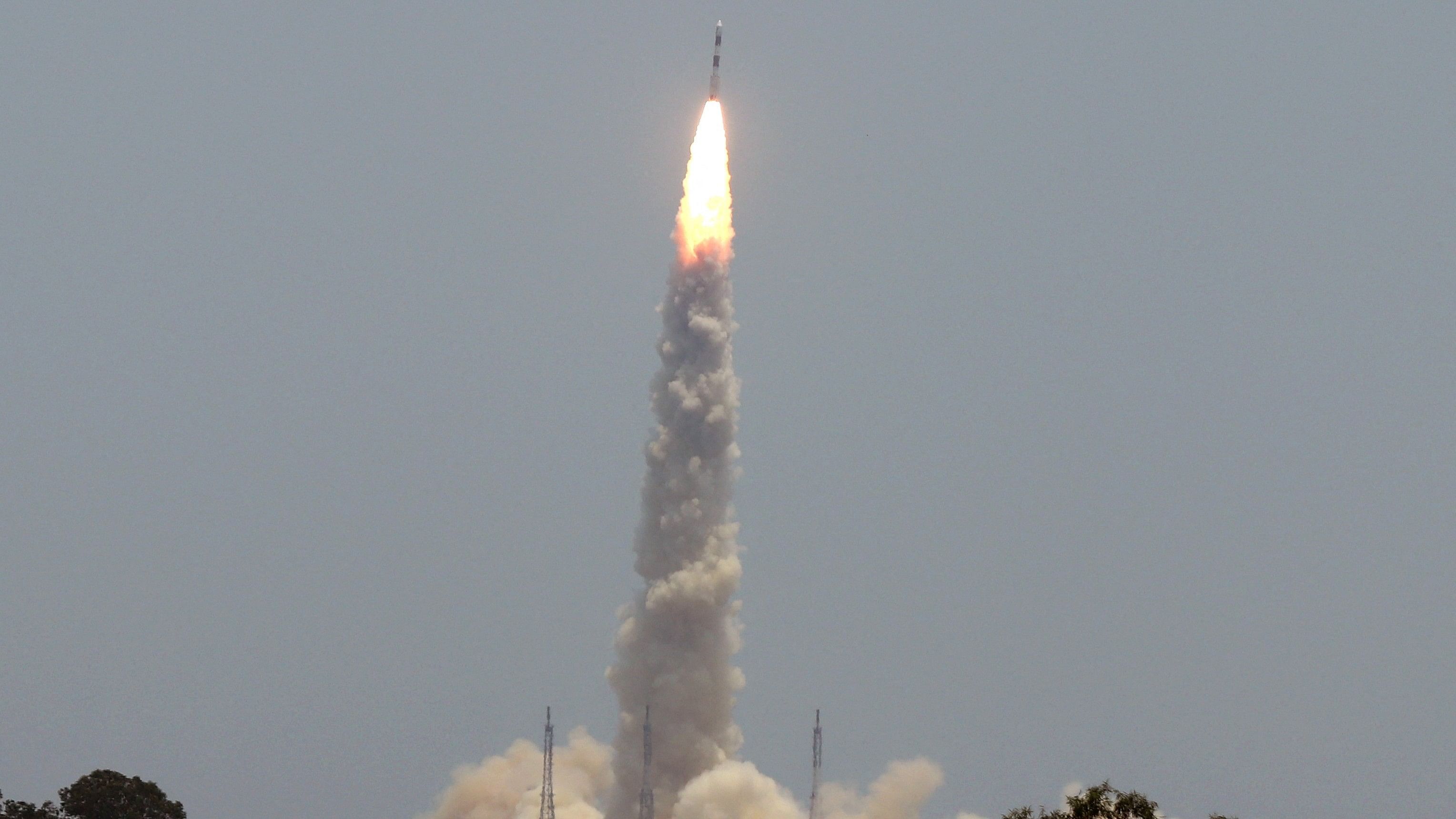
PSLV-C57 blasts off carrying the Aditya-L1 spacecraft from the Satish Dhawan Space Centre at Sriharikota.
Credit: Reuters Photo
The Indian Space Research Organisation (ISRO) on Sunday performed the first earth-bound manoeuvre with the Aditya-L1 spacecraft, raising it to an orbit of 245 km x 22459 km. Aditya-L1, India’s first space-based observatory to study the Sun, was launched from the Satish Dhawan Space Centre in Sriharikota on Saturday.
The space agency said the satellite was "healthy and operating nominally". The manoeuvre was performed at the ISRO Telemetry, Tracking and Command Network at around 11.45 am. The next earth-bound manoeuvre is scheduled for September 5, at around 3 am.
On Saturday, the mission launch vehicle – PSLV-C57 – placed the satellite precisely on its intended orbit. Aditya-L1 will undergo four more manoeuvres during its 16-day stay on earth-bound orbits, as it gains velocity. The orbit will be made progressively more elliptical before the spacecraft undergoes a Trans-Lagrangian1 insertion manoeuvre that will set up its 110-day journey to L1 (Lagrange point 1), about 1.5 million km from earth. Another manoeuvre will place the spacecraft on an orbit around L1.
Aditya-L1 is expected to take about four months to reach L1, one of the five Lagrange points in the Sun-Earth system where the gravitational forces between the two bodies are balanced. This positioning provides stability to the spacecraft as it watches the Sun continuously.
CMEs and coronal heating
The mission carries seven payloads developed by Indian Institute of Astrophysics (IIA), Bengaluru, Inter-University Centre for Astronomy and Astrophysics, Pune, Physical Research Laboratory, Ahmedabad, Space Physics Laboratory at the Vikram Sarabhai Space Centre, Thiruvananthapuram, U R Rao Satellite Centre, Bengaluru (two payloads), and Laboratory for Electro-Optics Systems, Bengaluru.
The primary instrument – IIA’s Visible Emission Line Coronagraph – will study the sun’s outermost layer, the corona, and track the origins of Coronal Mass Ejections (CMEs). It can watch the sun’s surface as close as 1.05 times the solar radius, facilitating a finer reading of the lower corona where CMEs are initiated.
From about 6,000 degrees Celsius on the sun’s surface, the temperature rises to about a million degrees Celsius in the corona. The mission is also expected to determine the factors that drive this heating.